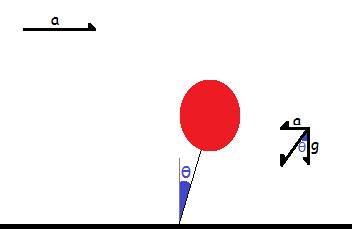The air pressure will be greater in the direction opposite the car's acceleration. Intuitively it is because almost all of the air in the car is not attached to the engine (whereas the frame of the car is). Maybe some oxygen or nitrogen molecules are adsorbed on the inside of the back window, taking a free ride from your engine... but the air closer to the front of the car has no reason to do anything other than stay where it is (of course each air molecule is moving very fast between collisions with neighboring air molecules but never mind: A fast moving molecule in the middle of the car would go almost nowhere before colliding with a neighboring air molecule).
As the car accelerates, the colliding molecules more or less stay in the neighborhood they are in, bumping into one another. But the rear window, attached to the frame of the car, flies forward. This causes the rear window to "catch up" with the air molecules in the middle of the car. Well, not quite. Even though there is a net drift of the air toward the back window [due only to the window moving forward], the electric repulsion between neighboring air molecules prevents them from compressing too much (this situation is very much like the atmosphere around our planet: gravity "tries" to pull the atmosphere to the ground but it can only do so much before it no longer has the force to compress the air any further).
So as the density of the air increases toward the rear of the car, a point is reached where the air density will increase no more. But by then enough has happened, a pressure gradient has already built up in the car, there is in fact more air in the back of the car than in the front. The helium ballon feels more pressure on the side of it that is closer to the rear window, and less pressure on the side of it that is closer to the front window. So the collisions between the the rear of the balloon and the the "rear air" combine to exert a larger force than the collisions with the front of the ballon and the "front air". This puts a net force on the balloon toward the front of the car, making the balloon move in that direction.
And yes, if you had two balloons of the same volume, both less dense than the air in the car, the lighter of the two balloons would accelerate toward the front of the car more rapidly under identical conditions. This is because there would be the same force on the new balloon but now it weighs less... so the acceleration will be larger.

